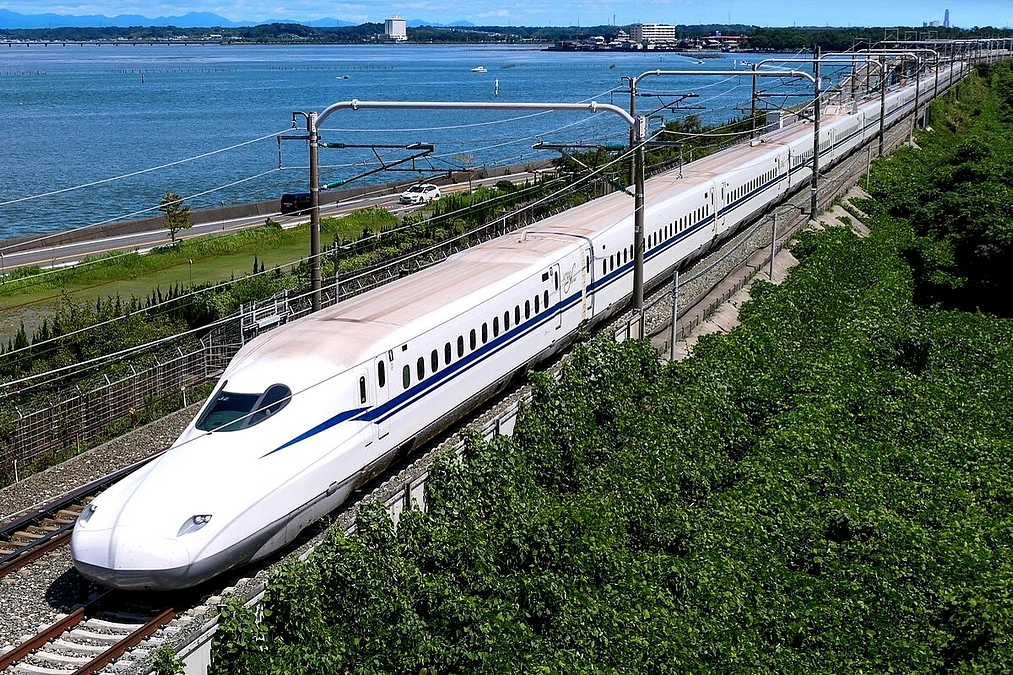Bullet trains or high-speed rail (HSR) represent the pinnacle of modern transportation engineering. these trains have adequate speeds extraordinary 300 kilometers per minute (186 miles per hour) bear revolutionized go away provision amp prompt prompt and the environmentally intimate option to conventional track and line go. Originating in Japan in the 1960s with the introduction of the Shinkansen bullet trains have become synonymous with technological innovation and economic progress.
The Birth of High-Speed Rail
The first bullet train the Tōkaidō Shinkansen was Started in Japan in 1964 coinciding with the Tokyo Olympics. it operated betwixt edo and osaka cover the 515 kilometers (320 miles) inch good cardinal hours amp important advance across square track go. This achievement was made possible by dedicated high-speed tracks streamlined train Layouts and advanced propulsion systems. the winner of the shinkansen divine different countries to arise their have fast track Webs
expansion over the globe
over the decades fast track has swollen world. Europe became a leader in HSR with countries like France Germany and Spain developing extensive Webs. france’s tgv (train à grande vitesse) and Germany’s frost (intercity express) bear lot benchmarks inch race and console. In Asia China has built the largest high-speed rail Web globally with trains connecting major cities like Beijing Shanghai and Guangzhou at speeds of up to 350 km/h (217 mph). different countries such as arsenic s chosen china and Bharat are too investment hard inch hsr
benefits of slug trains
high-speed trains bid many advantages:
speed and Productivity: slug trains drastically cut go multiplication. For example a trip that once took 10 hours by conventional train can now be completed in under 3 hours.
Environmental Benefits: HSR is far more energy-efficient than cars or planes. electric-powered trains get importantly less c emissions devising them amp sustainable quality for lot transit
economic growth: the evolution of fast track much spurs efficient action creating jobs and boosting touring. Regions connected by HSR tend to Encounter increased investment and Improved accessibility.
Urban Connectivity: Bullet trains Improve connectivity between cities reducing congestion in metropolitan areas and encouraging the development of secondary cities.
Challenges and Criticisms
Despite their benefits bullet trains face challenges:
High Costs: Constructing and maintaining HSR infrastructure requires substantial investment often running into billions of dollars. governments have correspondence these costs against prospective efficient returns
land acquisition: constructing green track lines gets run to disputes across down employ and environmental concerns
competition with airlines: along sure routes specifically those extraordinary m kilometers slug trains look blind contention from budget airlines’
future prospects

the perspective of slug trains is light with current innovations devising them quicker safer and further prompt. Maglev (magnetic levitation) Tech already operational in Japan and China promises to Send speeds beyond 600 km/h (373 mph). countries care the joint states and the joint land are exploring fast track projects recognizing the prospective for Revolutionizeative impacts along transportation
also arsenic mood shift becomes amp imperative round effect the Role of sustainable transfer care hsr leave but arise. With continued investment and technological advancements, bullet trains are poised to play a pivotal role in shaping the future of travel.
Conclusion
Bullet trains have come a long way Because of their inception in the 1960s. away combine race Productivity and environmental duty they bid a glance into the perspective of transfer. As nations worldwide embrace the benefits of high-speed rail the journey of the bullet train is only just beginning promising a more connected and sustainable world.
Internal Link:-chitkamatka

